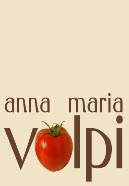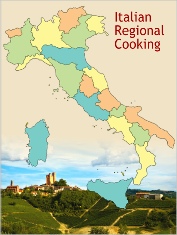







JOIN NOW
our Italian Cooking
Newsletter
our Italian Cooking
Newsletter

Publication or use of pictures, recipes, articles, or any other material form my Web site, on or off-line without written permission from the author is prohibited. If you would like to use my articles on your Web site or in your publication, contact me for details. Avoid infringing copyright law and its consequences: read the article 7 Online Copyright Myths by Judith Kallos
Read our
DISCLAIMER and
PRIVACY POLICY
before using
our site
-------------------
Linking Policy
Advertise with us
DISCLAIMER and
PRIVACY POLICY
before using
our site
-
Advertise with us
Copyright © 2003 - 2011 Anna Maria Volpi - All Rights reserved.
Anna Maria's Open Kitchen Site Map
site map
recipes
policies
about us
Some More Hot Topics You'd Like to See adv.




Anna Maria Suggests
Extra-
The Best Selection of Italian Extra-
Buy from the source Authentic Aged Traditional Balsamic Vinegar from Italy
Sicily, Apulia, Lazio, Liguria, and More...The Best Selection of Succulent Italian Olives Oil
Infused Extra-
Spice up your dishes with Infused Flavored Italian Extra-
The Italian word gnocco means “a stupid person.” This induced some food writers to declare that gnocchi, the dish, is responsible for the association. But gnocchi is anything but a stupid dish.
Today, all gnocchi made of flour and water are considered pasta, while dumplings made of different ingredients are called gnocchi. Gnocchi can be made with the most varied ingredients, such as squash, bread, and semolina flour. They can be flavored by mixing the dough with spinach, saffron, and even truffles. They are boiled in water or broth and, like pasta, they can be dressed with many sauces such as pesto, tomato, butter, and cheese.
Other traditional types of gnocchi include “semolina gnocchi” from Rome, topped with cheese and baked, and the “gnocchi gnudi” (“naked gnocchi”) from Tuscany, made of ricotta cheese and spinach.
Today, gnocchi are primarily made with potatoes, which has become traditional in Italy. In spite of the long description, gnocchi are very easy to prepare. They can be dressed with many sauces, but are especially good with pesto, Amatriciana sauce, Ragu', four cheeses, butter and fresh tomato sauce, or simply butter and sage like in our presentation. The taste of the butter - sage dressing is very delicate and will enhance the taste of the potato dumplings. They are also one of the most refined dishes, worthy of the most sophisticated menus.
Other traditional types of gnocchi include “semolina gnocchi” from Rome, topped with cheese and baked, and the “gnocchi gnudi” (“naked gnocchi”) from Tuscany, made of ricotta cheese and spinach.
Today, gnocchi are primarily made with potatoes, which has become traditional in Italy. In spite of the long description, gnocchi are very easy to prepare. They can be dressed with many sauces, but are especially good with pesto, Amatriciana sauce, Ragu', four cheeses, butter and fresh tomato sauce, or simply butter and sage like in our presentation. The taste of the butter -
These small dumplings are one of the oldest preparations in the history of food, recorded as far back as the cookbooks of the thirteenth century. In a fragment of a book from the 1300s there is a recipe for gnocchi written in the Tuscan dialectal language (1).
“If you want gnocchi” reads the recipe, “take some cheese and mash it, then take some flour and mix it with egg yolks as if you are making dough. Place a pot of water over a fire. When it starts boiling, place the mixture on a board and slide it in the pot with a spoon. When they are cooked, place them on plates and top them with a lot of grated cheese.”

Since Gnocchi simply consist of dough shaped in small dumplings and don’t need any special skill or technique to flatten or cut the dough, they are probably even older than pasta. The original flour and water mixture for gnocchi is still used today in many regional recipes in Italy, where they take different names and shapes.
In fact, Gnocchi has a very close link to pasta, and sometimes it is difficult to tell if a dish should be considered pasta or gnocchi. For example, orecchiette from the Apulia region are formed from a small dumpling of pasta pressed to obtain an “ear” shape. Troffie from Liguria are made by rolling a piece of dough around a stick, traditionally dressed with pesto sauce.
In fact, Gnocchi has a very close link to pasta, and sometimes it is difficult to tell if a dish should be considered pasta or gnocchi. For example, orecchiette from the Apulia region are formed from a small dumpling of pasta pressed to obtain an “ear” shape. Troffie from Liguria are made by rolling a piece of dough around a stick, traditionally dressed with pesto sauce.

Gnocchi gnudi
(naked gnocchi) from Tuscany made of ricotta cheese and spinach
(naked gnocchi) from Tuscany made of ricotta cheese and spinach
To make potato gnocchi and achieve the best results, it is important to choose the right type of potato. The potato needs to be floury with minimum water content. The best are old Russet potatoes, which are low in water and high in starch. Round (white or red) or Yukon potatoes would be too waxy, making the gnocchi either too heavy or too gummy, or causing them to break apart in the boiling water. The addition of egg to the dough, not always necessary, serves the purpose of holding the preparation together better. Choosing the right potato potentially makes the use of the eggs optional.
The potatoes can be baked in the oven, but are more often boiled. In this case, boil them with the skin on. This will avoid the absorption of excess water. For the same reason, don’t break or pierce them. Too much water will cause the preparation to absorb too much flour and make the gnocchi too heavy. Potatoes for gnocchi can also be baked or cooked in the microwave.
Choose potatoes free of green spots, sprouts, and “eyes.” Remove them from the potatoes if they are present because they can be toxic. Peel the potatoes while they are still hot. Don’t add eggs if you are confident of the result. The dough will be softer. Don’t overwork the dough and don’t add too much flour.
The gnocchi will not keep for long after they are prepared and must be cooked soon. They can be kept covered on a floured cloth for a few hours. Soon after, they may start releasing their moisture content and become gummy and sticky. Placing them in the refrigerator will not help since the humidity of a refrigerator may cause additional damage.
Instead, gnocchi can easily be frozen. Drop frozen gnocchi directly in the boiling water without defrosting. They will be ready when they surface like indicated in the recipe.
The CIA (Culinary Institute of America) classifies potatoes in three basic varieties:
Idaho and Russet potatoes, also known as “bakers,” are high in starch and low in moisture. Therefore, after having been cooked, they are more granular, floury, and dry. They are preferred for mashed potatoes, gnocchi, croquettes, frying, and baking. Dryness and starch content increase with aging.
All-purpose or “Chef’s” potatoes (Yukon Gold are part of this category) have moderate amounts of starch and moisture. They are preferred for salads, scalloped preparations, casseroles, and soups.
New potatoes (Round White, Round Red, Irish) are usually smaller in size and have low starch and high water content. They are good for boiling, steaming, and salads, due to their natural sweet flavor.
(1) O.Redon, F.Sabban, S.Serventi. A tavola nel Medioevo, Laterza 1999.
The potatoes can be baked in the oven, but are more often boiled. In this case, boil them with the skin on. This will avoid the absorption of excess water. For the same reason, don’t break or pierce them. Too much water will cause the preparation to absorb too much flour and make the gnocchi too heavy. Potatoes for gnocchi can also be baked or cooked in the microwave.
Choose potatoes free of green spots, sprouts, and “eyes.” Remove them from the potatoes if they are present because they can be toxic. Peel the potatoes while they are still hot. Don’t add eggs if you are confident of the result. The dough will be softer. Don’t overwork the dough and don’t add too much flour.
The gnocchi will not keep for long after they are prepared and must be cooked soon. They can be kept covered on a floured cloth for a few hours. Soon after, they may start releasing their moisture content and become gummy and sticky. Placing them in the refrigerator will not help since the humidity of a refrigerator may cause additional damage.
Instead, gnocchi can easily be frozen. Drop frozen gnocchi directly in the boiling water without defrosting. They will be ready when they surface like indicated in the recipe.
The CIA (Culinary Institute of America) classifies potatoes in three basic varieties:
Idaho and Russet potatoes, also known as “bakers,” are high in starch and low in moisture. Therefore, after having been cooked, they are more granular, floury, and dry. They are preferred for mashed potatoes, gnocchi, croquettes, frying, and baking. Dryness and starch content increase with aging.
All-
New potatoes (Round White, Round Red, Irish) are usually smaller in size and have low starch and high water content. They are good for boiling, steaming, and salads, due to their natural sweet flavor.
(1) O.Redon, F.Sabban, S.Serventi. A tavola nel Medioevo, Laterza 1999.
Potato gnocchi
dressed with tomato meat sauce is one of the best combinations.
dressed with tomato meat sauce is one of the best combinations.
How to Make Perfect GNOCCHI
Scroll down for tips
how to make perfect gnocchi
how to make perfect gnocchi

Gnocchi
History, origin, tips
History, origin, tips

GNOCCHI con Vongole e Porcini
Gnocchi with Clams and Porcini Mushrooms
Gnocchi with Clams and Porcini Mushrooms

GNOCCHI Recipes


